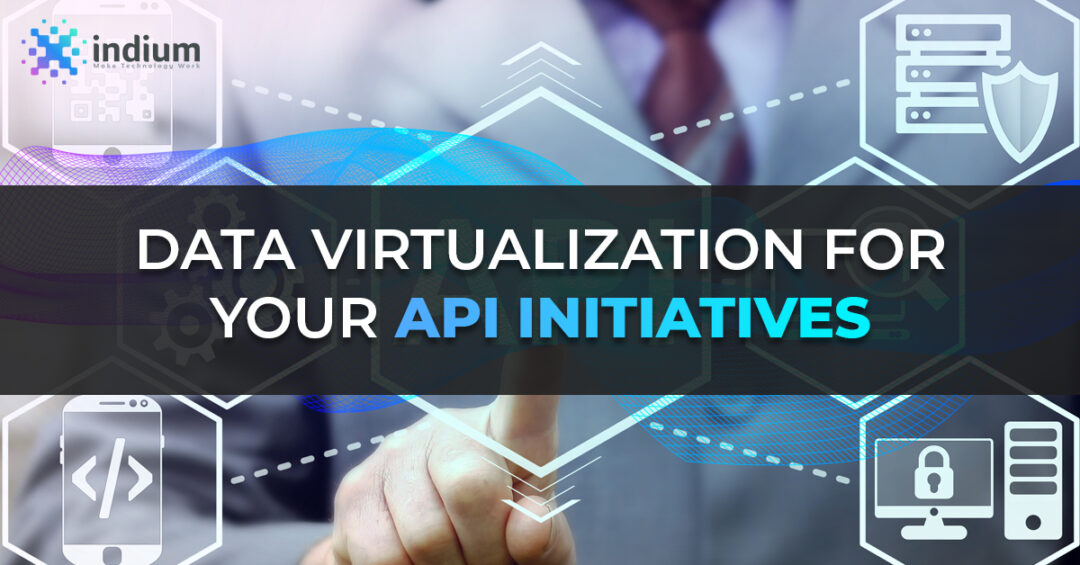Data Virtualization For Your API Initiatives
Blog: Indium Software - Big Data
This era has made millions of technology addicts! There are APIs everywhere- a user may interact with a single application or website but to compose the application, multiple APIs have to be integrated behind the scenes.
The use of external APIs can be obvious in some situations such as when YouTube video is embedded in a news story, or when the Pay with PayPal is clicked, where the user is redirected to a PayPal pop-up to complete the order with an API call.
For instance, API calls that occur when we communicate within a webpage may not be known to us. Instead of using PayPal, if the user wants to pay using credit cards, the website will possibly call a different API to check if the entered information is correct. If the payment is verified, a reply is sent back to the original website by the application enabling the user to complete the transaction online.
In order to build new products, API integrations let new applications and websites to reuse the existing applications and data.
Organizations that create APIs often benefit from such integrations. APIs can be monetized directly by charging for use or indirectly by enabling companies to attract new customers or collaborations. When used internally, APIs help to automate and simplify business processes and reuse data and processes within and around the organisation.
Virtualize Your Data Now!
As a result of the financial value of APIs, API initiatives are taking place in almost every organisation. However, when designing these projects, the important question is how to create data services that will ne revealed as your APIs efficiently. Data needs to be integrated first through several types of source systems which can be a dynamic, time-consuming process.
Data Virtualization
Data virtualization serves as a bridge between various disparate data sources, putting vital decision-making data together in one virtual location to power analytics. Data virtualization provides a modern data layer that allows users to access, merge, transform and distribute datasets with cutting-edge speed and cost. It allows users easy access to data stored around the enterprise- including conventional databases, large data sources and cloud storage spaces.
Via integrated governance and protection, data virtualization users are assured that their data is consistent of high quality and secured data. In addition, it also allows businesses to easily understand IT curated data resources that are easy to find and use through a self-service business directory.
Key benefits of using a Data virtualization service
Data virtualization allows you to integrate data distributed through various physical locations into logical business models without the need to transfer data from the underlying sources.
Data virtualization offers a variety of primary advantages for an organisation.
- Data is combined and converted in real-time, meaning consumers or applications have access to the latest data without having to connect directly to the source. The data virtualization layer summarises the location and format of the original data so that the end user is not subject to ambiguity of the underlying data model. This implies that if adjustments are made to the underlying data, the logical represent
- Logical datasets generated in the data virtualization layer can be used regardless of the consumption process to determine the accuracy of the data across the enterprise.
Creating a Data layer
Using traditional architecture techniques to develop data services can be both sluggish and expensive. Data virtualization techniques allow you to build stable data services over models in your virtual layer using a simple graphical interface. With only a few clicks, these can be developed and implemented using various protocols and supporting all major security and documentation requirements.
Logical datasets used to build data services are the same datasets that are accessible to other users connected to a data virtualization layer. This allows application developers, web portals, or any other frameworks to use the same approved datasets as BI teams eliminating the issue of developers producing their own uncertified silo datasets. This has the ability to generate logical data models with integrated real-time data, in combination with easy-to-use publishing options for data services layer to accelerate your API initiative.
Leverge your Biggest Asset Data
Leverge your Biggest Asset Data
Other Benefits of Data Virtualization
- Centralized layer for protection
- Potential data governance aid
- Advanced query optimization techniques for effective federation
- Advanced caching features
- Assistance for the control of workload
The post Data Virtualization For Your API Initiatives appeared first on Indium Software.
Leave a Comment
You must be logged in to post a comment.








